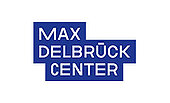3D-Seq: Localizing Spatial Gene Expression in 3-Dimensions on Single Cell-Level
Keywords
single cell transcriptomics,spatial gene expression,3D
Invention Novelty
Spatial cellular information is crucial for understanding the complex crosstalk and communication between neighbouring cell-types during tissue development, differentiation, and homeostasis. Researchers of the Berlin Institute of Medical Systems Biology developed a a novel “3D-Seq” technology that provides a solution for obtaining single-cell gene expression profiles in a spatial context.
Value Proposition
Overall, the three-dimensional resolution of the cellular tissue architecture can provide invaluable insights into all relevant molecular mechanisms and processes, reflecting the (patho-)physiological state of a defined tissue. Most available methods focus on transcriptional profiling on defined plane coordinates in 2D revealing in situ sequencing data with limited depth and cellular resolution. Available 3D-sequencing methods are associated with very high costs and are not yet transferable to single cell resolution. The here proposed “3D-Seq” technology overcomes these limitations and provides spatial transcriptomics on a single cell level at low costs to fully explore the individual cellular make-up in a tissue sample at high spatial resolution. Remarkably, this grid-based technology is also extendable to further -omic technologies.
Technology Description
The invention relates to a novel “3D-Seq” technology that provides a solution for obtaining single-cell gene expression profiles in a spatial context. Spatial single-cell RNAseq can be carried out in any desired tissue sample by first compartmentalizing consecutive tissue sections and consequently mapping positional information for individual cells within each compartment with using only a single slide. By this means RNAseq data regarding identity, activity and functionality for individual cells will be assayed in the three-dimensional space to uncover tissue heterogeneity. A central feature of the presented technology is a newly designed grid providing a spatial (3D-) coordinate system that enables compartment specific combinatorial barcoding of single cells within the desired dimensions. The technology also comprises a computational solution to reveal the cellular transcriptome of individually captured cells in relation to their localization. “3D-Seq” allows deep sequence analysis in multiplex-based in situ RNA sequencing and is applicable to all NGS platform technologies.
Commercial Opportunity
Technology is ready for further application in basic research, molecular pathology and/or biomarker discovery. This opportunity is available for research collaborations and/or licensing.
Development Status
Feasibility of technology has been shown with a first series of grid prototypes.
Patent Situation
Patents pending in Europe (EP3824098A1), Canada (CA3105949A1) and US with priority of 2017.
Further Reading
Lein et al. The promise of spatial transcriptomics for neuroscience in the era of molecular cell typing. Science 358, 64-69 (2017).





